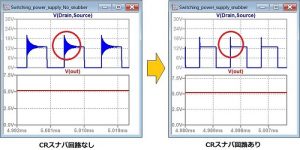
Adding diode clamps here and there could help in that case. Real life (sub) circuits saturate too with large changes which automatically acts as a slowing agent, while spice models dont always limit anything like that. There are various things to try, most involving slowing down the circuit to some degree, even a tiny amount can do it sometimes without bothering the more significant variables. Sometimes a cap or inductor with added initial value will help, sometimes it will make things worse if an initial value is not close to some particular value. An inductor with no parallel resistance can cause this too.
#Ltspice time step too small series#
This could be a capacitor with no series resistor for example, and after some real life resistance is added in series suddenly the derivatives behave much better. Other things you can try are increasing pulse source rise and fall times, if applicable, adding parasitic capacitances, damping ideal inductors, removing parasitic inductances and reducing accuracy.

In LTSpice, you could try the alternate solver. The drawback is that some of the internal sources may generate a fast changing value that makes the derivatives very very high thus forcing the math routine into an overflow or forces the variable time step routine to choose a tiny tiny step just to satisfy some max derivative criterion.Īs you noted now one way to get around this is to find a better model, but another way is to simply slow down some of the stiff parts of the circuit. Time step too small means there is something changing so abruptly that SPICE can't find a solution. I havent looked at these models that closely but spice has a problem with some of the sub circuits because they are not real sub circuits they are very fictional in an attempt to get a simpler model that runs faster.


 0 kommentar(er)
0 kommentar(er)
